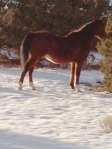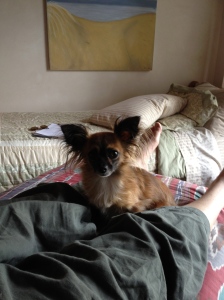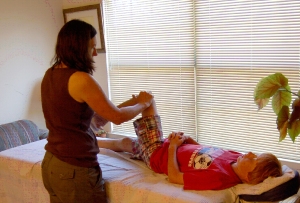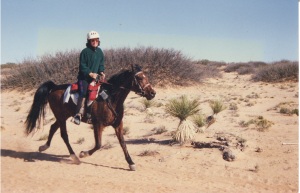Winter solstice begins today and lasts through Christmas Day, December 25th. What we have this year is an alignment of the planets with the sun and the beginning of a new era for this planet we live on.
Yearly Archives: 2012
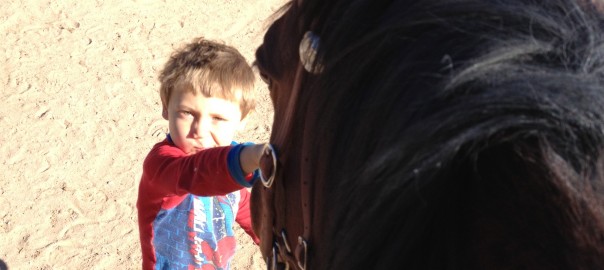
Interspecies bonds provide a comforting presence
This Discovery News Channel headline: “Dogs Sent to Newtown to Comfort Grieving” caught my eye.
“Discovery News – A team of specially trained dogs just journeyed 800 miles to help grieving children and adults at funerals and other gatherings this week in Newtown, Conn.
Continue reading Interspecies bonds provide a comforting presence
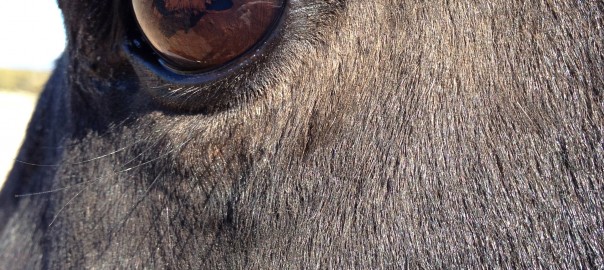
Is my animal in pain?
A lot of times owners ask me if their horse or dog is in pain. Generally they don’t ask about their family members because people can verbalize their pain. When I work on humans I rely heavily on what they tell me as far as pain goes, and how it’s going – is it getting better, worse, is there any change whatsoever?
Competition with conscience
I have been thinking a lot about how people approach competition with horses and how to nurture our relationships with our horses while we are asking them to perform for us. The reason why is because a lot of times horses experience burnout, as a result of their humans pushing for some kind of success.
Cowgirl or cowboy up!
Recently I have heard this expression “cowgirl up!” told to horse owners who are not coming forward in their leadership with their horses. Among some trainers and clinicians, it is meant to be helpful, but for many women and some gentle men, it only serves to make them feel insecure about their leadership around their horses. It usually involves being chastised for not “making” your horse do something he is supposed to (in human terms). I know when this was first posed to me it made all my insecurities surrounding being credible come rearing up and made me into a quivering mass of jelly. Women in particular can have difficulty speaking up and that ability in a relationship with a horse is necessary, even though speaking up is going to take a different form.
Which is it: behavior or physical pain?
Which is it: behavior or physical pain?
This question came up in a recent discussion regarding horses and is one that comes up in treatment quite frequently. My answer to this question is this: I will treat the body first and find out if there are any reasons why the horse might be experiencing discomfort. I will also ask questions about her lifestyle – whether there have been changes in living situations, feed, exercise, etc. that might impact the horse.
Some horses are very stoic and although they are lame they won’t complain about a saddle going on or being asked to work. Others may appear sluggish or balky or actually pin their ears and kick out when asked to do anything that might involve pain. They just don’t want to be messed with. If I work with the horse for awhile, problems will come up that we’ll be able to address and hopefully the behavior will go away.
If the horse is physically fit and has been checked out by a veterinarian as well, and is still experiencing what appear to be “behavioral” problems, then we need to look at what is making her unhappy. Sometimes it is the way the owner has been interacting with the horse. This doesn’t mean the owner is a bad owner, it just means possibly there is a focus on performance, or the owner is madly busy trying to pay the bills and hasn’t had any brain space to consider what the horse might need. We all find ourselves there at some point or another 🙂 Or, maybe a life change has occurred; a stablemate has gone.
An example is our horse, Patches. We purchased Patches from a Craiglist ad in August 2011 for our granddaughter, Ariana. He was advertised as a former show horse, and for the previous four years, a therapy riding horse. He knew how to do everything you asked. “Push button,” you might say. Ariana, my husband Michael and I all rode him to test him out. He was a good boy but I thought he was a little shut down, meaning I couldn’t really sense his true self.
 We bought him, needless to say. He is a great horse who took some time to get adjusted because he lets other horses push him around, but he’s so big and sweet you just fall in love with him, so he had a lot of support from us. He was underweight when we got him so we packed on the groceries. Now all those patches have expanded as they do with all of us in this family. He took to everything, loving
We bought him, needless to say. He is a great horse who took some time to get adjusted because he lets other horses push him around, but he’s so big and sweet you just fall in love with him, so he had a lot of support from us. He was underweight when we got him so we packed on the groceries. Now all those patches have expanded as they do with all of us in this family. He took to everything, loving 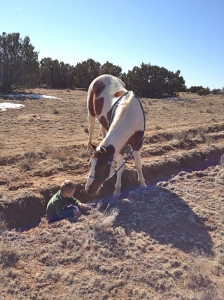 attention.
attention.
Over the winter, I began to notice some changes in his demeanor. It felt like he wasn’t able to hold it all together. He had always been cranky about having the cinch tightened, and was worse around adults, but it got so he was cranky around the kids too. I was told this cinchiness was the reason he had lost his job as a therapy horse. No one wanted to deal with him kicking out when they cinched him up. Because I’m a bodyworker, I looked at it not as behavioral but as physical. He was very constricted in the chest and sternum area, and he was a loud breather, a “roarer” as the vet would identify it. He has an epiglottal flap that closes over the larynx and impairs breathing. I began to wonder if the problem with the cinching was in some way related to this and chest restriction. He also suffered from intermittent lameness.
Patches had been tenderfooted after trims and one day he kept lying down. The next day he was not eating, and it turned out he had pneumonia and spent the next two days after that in the horse hospital.
For his rehabilitation I worked on him a small amount each day for a couple of weeks to bring him back around. We didn’t ride him because we wanted him to not have any pressure, so took him for walks and let him graze. We did liberty work with him. To work with resistance, we set up situations that he would not have to resist.
What I also notice is that he loves to perform. He loves children and will want them in the saddle before an adult, but he is so affectionate he will put up with adults very nicely. He still has the roaring but I have him on an herbal supplement to reduce that and he is doing well.
I believe there were several things at play here. First of all, Patches may have been getting sick while he was a therapy horse, but people regarded his problems as behavioral. Some inflammation can remain residual in the body for years so he could have been sick in a way that would not show up on any tests. Secondly, not feeling well leads to a change in behavior and from that patterns emerge that may end up getting stuck and not resolve themselves without help.
When a horse begins acting crabby about something, it’s time to take stock of the whole picture, not just say, oh, he’s grouchy. Ear flattening, kicking out, biting, striking, bucking can all indicate that a horse may be experiencing pain that is unseen to us. I was recently working on a mare who travels beautifully, no lameness, no back soreness, yet when I went to lift her hind leg, she wrenched it away from me repeatedly. It has taken a couple of sessions for her to let me even touch the hind leg. There was pain at the hip and there is a small amount of atrophy in the gluteal muscles on the same side of the haunch. This is unusual for a horse that is getting good exercise and turnout. Yet attention needs to be given to this even though she travels well and isn’t lame, because it’s hurting her.
What is good about this situation is the horse can remain in training yet receive bodywork to heal from within. Already after a couple of sessions it’s much better. Sometimes, however, a horse will need to be pulled out of training just to let the body heal, either physically or mentally, or both. That’s what we did with Patches, however, we were still able to do Liberty Foundation Training with him during that healing time.
In another case, a mare didn’t want to walk fast. I felt no restriction in her body when I did bodywork on her, so we did a small amount of liberty work on her and her owner reported that she is walking out now. There are some things we can do for follow-up, to keep that enthusiasm in the walk, to keep it all lively and interesting.
This dual approach has one thing in common: in Ortho-Bionomy/Equine Positional Release bodywork, a primary focus is to “meet” the individual where they are. The same is true of the Liberty Foundation work: we start where the horse is, we do not start with our own agenda. This is why some piece of the issue can be addressed by bodywork, and another piece addressed and reinforced by the foundations.
If you think your horse would benefit from this approach, contact me to set up an appointment. susansmith@orthohorse.info 505-501-2478
(copyright Susan Smith)
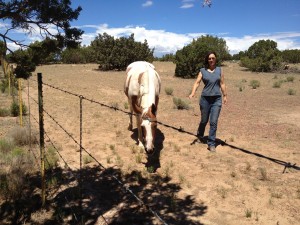
Equine trick-or-treat – give me something good to eat…
“Trick or treat – smell my feet – give me something good to eat” – my little five-year-old grandson goes around saying this and thinks he’s very funny. I think it’s rude, and I told him if he’s polite he may get far more treats!
At Halloween the topic of treats comes up of course, but it comes up often with horse work. I don’t want horses sniffing my pockets all the time, getting pushy, over treats. It makes them demanding and disrespectful.

Continue reading Equine trick-or-treat – give me something good to eat…
Report on the Carolyn Resnick Waterhole Rituals Clinic, Spirit Horse Ranch, Oklahoma City
It’s been many years since I hauled a horse over 500 miles to an event, and generally it was to an endurance ride. This time, Patches (my non-endurance horse) and I just returned from the Carolyn Resnick Waterhole Rituals Clinic held at Spirit Horse Ranch near Oklahoma City. Hosted by certified Carolyn Resnick trainer, Ruella Yates, the two-day Waterhole Rituals clinic was an amazing event for all who attended. The clinic was followed by two days of lessons. The horses and people made great strides under Carolyn’s tutelage. What I love about this method is that there is always something more to learn. Even though I know the rituals, I learn them deeper each time I see Carolyn work or read her blog.
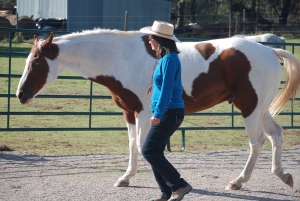 Continue reading Report on the Carolyn Resnick Waterhole Rituals Clinic, Spirit Horse Ranch, Oklahoma City
Continue reading Report on the Carolyn Resnick Waterhole Rituals Clinic, Spirit Horse Ranch, Oklahoma City
Embodiment – understanding at the cellular level
In Ortho-Bionomy study we talk about the study as the “Evolvement of the Original Concept.”
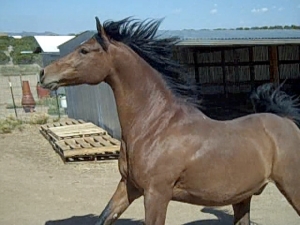 Continue reading Embodiment – understanding at the cellular level
Continue reading Embodiment – understanding at the cellular level
Please don’t tell me I need a new saddle!
The dreaded words, “You need a new saddle,” strike fear in the hearts of everyone who owns a horse. This advice is usually greeted by protests, “but it has fit her for years,” “I had this saddle custom made, it has to fit,” “my vet says it absolutely fits,” “I can’t afford another saddle!” and on and on.



